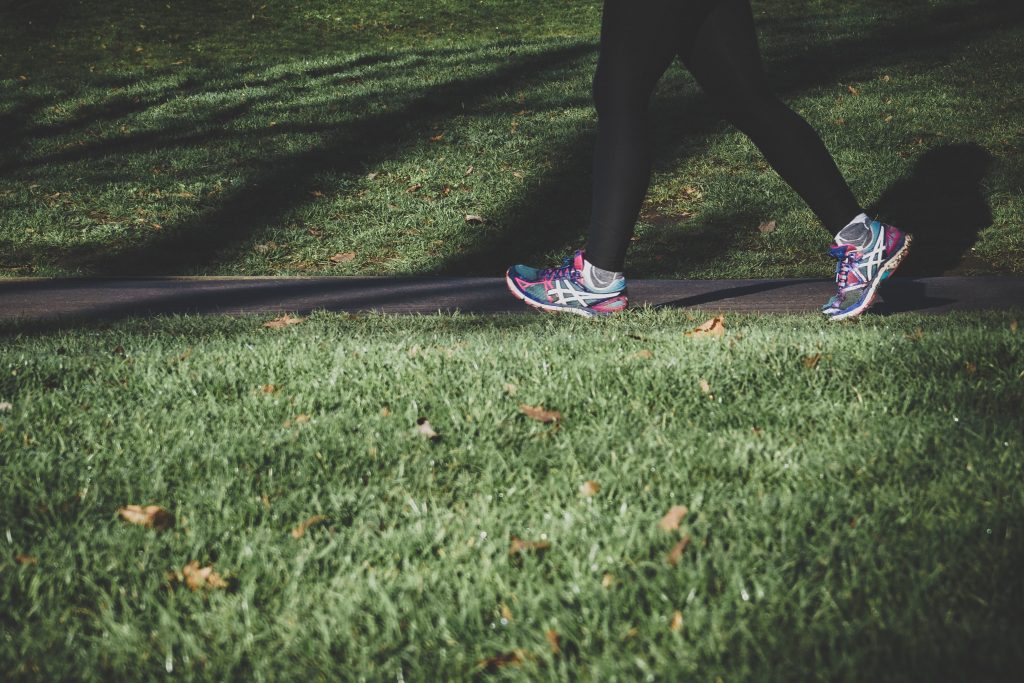
Exercise is generally understood to be an adaptive behaviour that is associated with a range of physical and mental health benefits. However, when someone struggles not to exercise despite illness or injury, or exercise begins to interfere with daily life, it can be considered a maladaptive behaviour.
Maladaptive exercise frequently occurs among individuals with eating disorders (EDs; Fietz et al., 2014) and has been linked with increased risk of disordered eating among adolescents and young adults (Zmijewski & Howard, 2003). Additionally, once established, these exercise patterns can be difficult to change and are associated with more severe ED symptoms in clinical populations (Dalle Grave et al., 2008).
Although we know there is a clear association between maladaptive exercise and ED symptoms, less is known about factors that might predict the emergence and trajectory of maladaptive exercise in adolescence. If we can identify factors that put individuals at risk, we have a better chance of successfully intervening in a timely manner, and disrupting unhealthy behaviours before they escalate. Schaumberg et al. (2023) aimed to fill this gap in the literature. Using a longitudinal cohort design, they examined motivations for exercise and maladaptive exercise, how these changed over the course of adolescence and early adulthood, and the predictors of exercise motivations and behaviour.

Exercise, which is typically considered to be a healthy and adaptive behaviour, can become maladaptive for some people, and has been linked to disordered eating.
Methods
This study utilised data from the Avon Longitudinal Study of Parents and Children (ALSPAC). ALSPAC is a population-based longitudinal cohort of mothers and their children who were born in the South West of England between 1991-1992. Many types of data have been collected over the past 30 years, allowing Schaumberg and colleagues to examine the frequency with which adolescents and young adults in the sample engaged in three different types of exercise at ages 14, 16, 18, and 24 years:
- No exercise for weight loss
- Exercise for weight loss
- Maladaptive exercise
Exercise was considered maladaptive if individuals reported that it interfered with school or work, and either that they felt guilty for missing an exercise session, or that they exercised despite being ill or injured.
Variables associated with future transitions between the three different groups, as well as future exercise for weight-loss and maladaptive exercise, were examined. Predictors included measures of body dissatisfaction, thin-ideal internalisation, and fear of weight gain. Demographic predictors included body mass index (BMI) at age 13, and a measure of socioeconomic status (SES).
Of note, response options to the exercise questions at age 24 differed from other timepoints, so the authors aligned the data from different time-points to make sure that maladaptive exercise at one time point was similarly defined as that at another.
Results
In total, 3,319 male and 4,360 female participants who responded to the exercise questions during at least one time point were included in analyses.
The sample was primarily white (84.93%) and the most common parental occupation reported was managerial/technical (4), which was the second highest occupation level of six ranging from unskilled (0) to professional (5). Body dissatisfaction and thin-ideal internalisation scores were mostly neutral in the cohort, and the majority of participants (83.22% of males, 53.75% of females) reported no fear of weight gain at age 14.
Across each of the time points (ages 14, 16, 18, and 24), the percentage of the sample who fell into each of the three categories remained relatively stable, with some notable increases in exercise for weight loss between ages 16 and 18 years for females, and between 18 and 24 for males. The percentage of individuals reporting maladaptive exercise was highest across the board at age 24 (25.0% of females, 20.2% of males).
The investigators identified a subset of 568 males and 1,169 females who completed all assessments at each timepoint (14-24). Using data from this group only, the authors took a closer look at transitions between exercise categories:
- For both sexes, the most common outcome was remaining in the exercise group previously reported.
- Analyses probing the predictors of maladaptive exercise behaviour found that greater fear of weight gain, greater thin-ideal internalisation and higher BMI were associated with greater likelihood of exercising for weight-loss as well as developing maladaptive exercise behaviour over time, among males and females.

Both exercising for weight loss and maladaptive exercise appear to increase throughout adolescence, with maladaptive exercise being at its highest at age 24.
Conclusions
The responses from the large sample of individuals who participated in this study indicate that during adolescence, maladaptive exercise increases over time, among males and females, as does exercise for weight loss (which is linked to increased risk for maladaptive exercise). To that end, the authors note that:
High and increasing rates of both exercise for weight loss and maladaptive exercise across adolescence […] bring to question the degree to which marketing and public health messages […] may impact young people’s experiences of exercise.
Additionally, increased BMI, body image concerns and fear of gaining weight predicted the development of maladaptive exercise behaviours. This finding is consistent with other literature, which suggests that adolescence is the most likely time for eating disorder behaviours to emerge. The authors note:
Youth reporting [eating disorder] cognitions in early adolescence may be most likely to internalise weight loss motivations for exercise and develop a problematic relationship with exercise.

Marketing and public health messages about exercise and weight loss may influence adolescents’ perspectives and experiences of exercise – and not necessarily for the better.
Strengths and limitations
This study has notable strengths, including the large sample size, which improves the overall reliability of these findings. Additionally, the longitudinal cohort design allowed the investigators to capture changes in exercise attitudes and behaviour across adolescence and examine relationships over time. Both males and females were adequately represented in the current sample. Males are frequently underrepresented in eating disorders research, making it difficult to study exercise behavior and disordered eating in this population. As such, the study can offer particularly unique insights and implications for practice.
As addressed by the authors towards the end of the paper, a central limitation of this study was the discrepancy in the measure of exercise motivations/behaviours across the timepoints, and the large gap between data collection at 18-24 years. It is possible that maladaptive exercising being highest at age 24 can be attributed to the questions being asked differently, or to factors at play between ages 18-24 years not being adequately captured (e.g., differences in further education, engagement in team sports).
Additionally, there was limited diversity in the sample, which was overwhelmingly white and limited to the UK. Thus, findings should not be inappropriately generalised to other cultures and communities whose cultural messages and norms related to weight and exercise may be different from the individuals surveyed in this study.

Whilst the study has several strengths, exercise questions within ALSPAC were asked differently between the ages of 18 and 24 years, making it difficult to adequately and accurately compare findings between the two timepoints.
Implications for practice
For parents, teachers, healthcare professionals, and anyone else who interacts with and supports teens and young adults, these findings highlight the need to be aware that adolescence is a sensitive period for the development of maladaptive exercise behaviours. If a teen appears to be engaging in maladaptive exercise, there is a chance that underlying body image concerns are fuelling the behaviour, which need to be addressed. It is important for caregivers to recognise the relevant signs of maladaptive exercise – such as exercising when ill or injured, or missing school or other daily activities due to exercise – and raise the concern with the child and a healthcare professional.
The study suggests that exercising for weight loss may be a reasonable point of intervention to prevent maladaptive exercise. Outcomes suggest that instead of encouraging exercise for weight loss or management, both mental and physical health advocacy groups should emphasise the physical and mental health benefits of moderate and adaptive exercise. In some cases, exercise can be beneficial for mental health (read more in Ross’ Mental Elf blog), so there is a fine line that healthcare providers must balance when making exercise-related recommendations. Other benefits may include reduced risk of cardiovascular diseases, stronger bone and muscle health (NHS, 2021), and/or the social, stress-relieving and enjoyable aspects of exercise. This may be a way of promoting healthy approaches towards exercise among adolescents and young adults, although of course this hypothesis requires testing.

Emphasising the physical and mental health benefits, and enjoyable aspects of exercise, may help promote healthier attitudes towards exercise among adolescents and young adults.
Statement of interests
The authors have no relevant interests to disclose.
Links
Primary paper
Schaumberg, K., Bulik, C. M., & Micali, N. (2023). Patterns of maladaptive exercise behavior from ages 14–24 in a longitudinal cohort. Journal of Child Psychology and Psychiatry, 64(11), 1555-1568.
Other references
Dalle Grave, R., Calugi, S., & Marchesini, G. (2008). Compulsive exercise to control shape or weight in eating disorders: prevalence, associated features, and treatment outcome. Comprehensive Psychiatry, 49(4), 346–352.
Fietz, M., Touyz, S., & Hay, P. (2014). A risk profile of compulsive exercise in adolescents with an eating disorder: a systematic review. Advances in Eating Disorders: Theory, Research and Practice, 2(3), 241-263.
Nedoma, R. (2023). Exercise can help reduce depressive symptoms in people who are not clinically depressed. The Mental Elf.
NHS (2021). Benefits of exercise. National Health Service.
Zmijewski, C.F., & Howard, M.O. (2003). Exercise dependence and attitudes toward eating among young adults. Eating Behaviors, 4(2), 181-195.
Photo credits
- Photo by Venti Views on Unsplash
- Photo by Arek Adeoye on Unsplash
- Photo by Alexandra Tran on Unsplash
- Photo by Mikaela Shannon on Unsplash
- Photo by Steven Lelham on Unsplash
- Photo by Greg Rosenke on Unsplash
